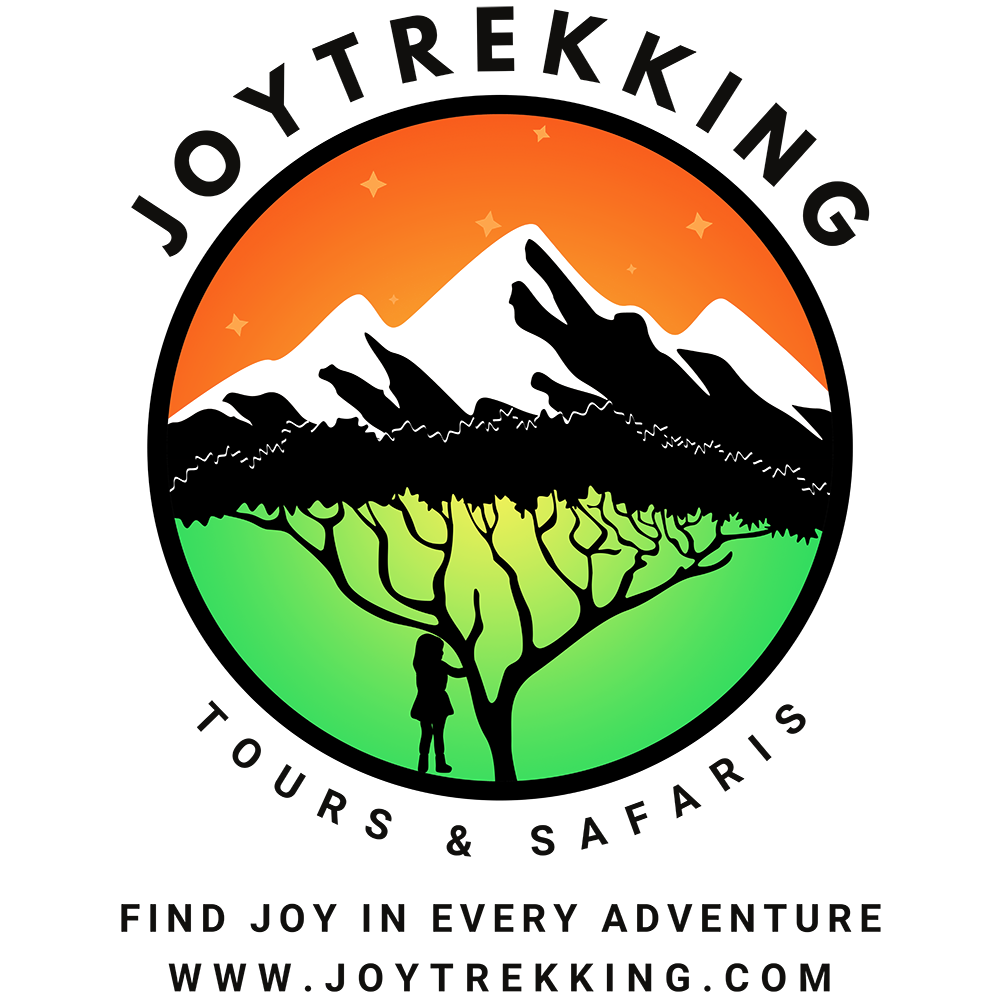Professional Safety Standards for Mount Kilimanjaro, Mount Meru & Tanzania Safaris
At JoyTrekking, safety is the foundation of every adventure. Whether you’re climbing Mount Kilimanjaro, trekking Mount Meru, or exploring Tanzania’s national parks on safari, our professional standards ensure you travel with confidence and care.
Mount Kilimanjaro Safety: Our Top Priority
Climbing Kilimanjaro is a life-changing achievement, but it requires careful preparation and monitoring. We combine local expertise with international safety standards to keep every trekker safe while allowing space for personal growth and achievement.
Mount Kilimanjaro Altitude Safety & Monitoring
- Lake Louise AMS Scoring System used daily to identify altitude sickness symptoms with international best practice
- Twice-daily pulse oximeter checks for oxygen and heart rate
- Daily briefings so every trekker feels informed and confident
- Mandatory acclimatization days built into every trek, no shortcuts
- Strict hydration and nutrition rules to keep strength and energy steady
Kilimanjaro Safety Protocols
Climbing Kilimanjaro requires more than determination, it requires a professional safety system. At JoyTrekking, we’ve developed protocols that ensure every climber is cared for from start to summit:
- Pre-climb medical questionnaires to flag health concerns early
- Wilderness First Responder (WFR)-certified guides with thousands of successful climbs
- Constant weather monitoring and flexible summit planning
- A clear turn-back policy if health declines
- Low climber-to-guide ratios for personal attention
- Emergency oxygen and Gamow bags on every trek
- Coordinated evacuation plans with park rangers and medical services
- 24/7 communication with radios and satellite phones
- KPAP standards compliance for porter welfare
- Regular guide training refreshers in high-altitude safety and rescue protocols
Your health is always our highest priority. With these measures in place, we create the conditions for a safe, rewarding, and truly memorable climb.
Mount Kilimanjaro Risk Management
While Mount Kilimanjaro sees over 35,000 climbers annually, fatalities remain rare at about 0.03%. Most incidents involve undisclosed medical conditions or ignored protocols. Our conservative approach, including acclimatization, close monitoring, and strict health checks, minimizes these risks.
Mount Kilimanjaro Safety Equipment: Oxygen cylinders, altitude monitoring devices, wilderness medical kits, and satellite communication support.
Mount Meru Climbing Safety
Mount Meru offers both altitude challenges and unique wildlife encounters. Our protocols mirror our Mount Kilimanjaro’s rigorous standards with added wildlife encounter guidelines.
Mount Meru Safety Features: Professional guides, altitude monitoring, wildlife awareness, emergency communication, and full safety briefings.
Tanzania Travel Health & Safety Preparation
Health Requirements
We guide all climbers through essential pre-travel health preparations, including:
- Required vaccinations for Tanzania entry
- Altitude medication consultations
- Malaria prevention strategies
Travel Safety Essentials
- Comprehensive travel insurance with medical evacuation coverage
- Age requirements: 16–80 years (exceptions require medical clearance)
- Medical documentation for pre-existing conditions
Equipment Safety & Preparation
Proper Gear for Safe Climbing
Professional Kilimanjaro climbing equipment is essential for Mount Kilimanjaro safety and expedition success. We provide comprehensive equipment lists for Kilimanjaro climbing and Mount Meru trekking to ensure you’re fully prepared with the right gear for Tanzania’s mountain conditions.
Kilimanjaro Equipment Rental Services
Don’t have all the required Kilimanjaro climbing gear? Our professional equipment rental service provides high-quality, safety-tested gear for Mount Kilimanjaro expeditions. From sleeping bags rated for summit night temperatures to waterproof clothing and climbing boots, we ensure you have proper equipment for safe Kilimanjaro climbing.
Equipment Safety Features: Regular safety inspections, international quality standards, proper fitting guidance, and backup equipment availability for all Kilimanjaro climbing essentials.
Tanzania Safari Safety & Wildlife Protection
Tanzania Wildlife Safety Standards
Tanzania safari safety encompasses professional wildlife guides who understand animal behavior and maintain safe distances during game drives. Our Tanzania safari safety protocols ensure authentic wildlife encounters while prioritizing both visitor protection and wildlife protection.
Tanzania Tour Safety Vehicles
All Tanzania safari vehicles feature safety equipment, emergency communication systems, and experienced drivers trained in Tanzania wildlife safety procedures.
Emergency Response & Tanzania Safety Support
24/7 Tanzania Emergency Services
- Kilimanjaro Emergency Response: Satellite communication for remote mountain areas and immediate evacuation coordination
- Tanzania Safari Emergency Support: Vehicle-based communication and rapid response protocols
- Professional Medical Care: Wilderness first responder-trained guides with authority over all safety decisions
Why Choose JoyTrekking for Tanzania Safety Excellence
Safety isn’t just a protocol, it’s the framework that allows authentic adventure, cultural immersion, and personal growth. Our systems protect your health while giving you the freedom to focus on what matters most: the experience itself.
FAQs About Health & Safety
We use both medical-grade pulse oximeters and the internationally recognized Lake Louise AMS Scoring System to identify symptoms early and act quickly.
Every climb includes emergency oxygen, Gamow bags, satellite phones, radios, and comprehensive medical kits.
We combine international safety standards with deep local expertise. Our guides are WFR-certified, our porters are protected under KPAP rules, and we prioritize conservative summit strategies for maximum safety.
Yes. We require climbers to have insurance that includes medical evacuation coverage. Importantly, coverage does not need to extend to Kilimanjaro’s 19,341 ft summit — helicopters cannot operate that high. Instead, policies should cover evacuation from lower points such as Barafu Camp (~15,300 ft), which is the highest feasible evacuation location. This ensures proper support in emergencies without unnecessary policy costs.
Yes. We require climbers to have insurance that includes medical evacuation coverage to ensure proper support in emergencies.
Yes. Even if you are not climbing, we recommend comprehensive travel insurance for all safaris. Policies should include medical coverage, emergency evacuation (road or air), and trip interruption protection. This ensures peace of mind in the event of unexpected illness, injury, or logistical challenges during your safari.
Our professional wildlife guides maintain safe distances, vehicles are fitted with emergency equipment and communication systems, and we work in coordination with park rangers for rapid response.
Plan Your Safe Tanzania Adventure
Ready to experience Mount Kilimanjaro climbing safely, Tanzania safari adventures, or Mount Meru trekking with professional safety support? Contact us to discuss your specific Tanzania travel safety needs.
